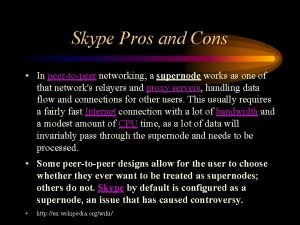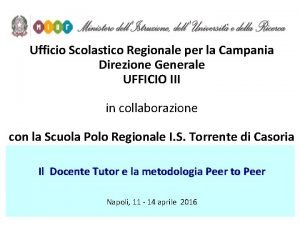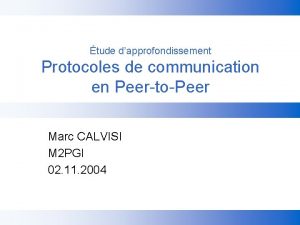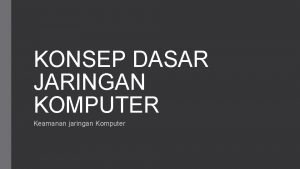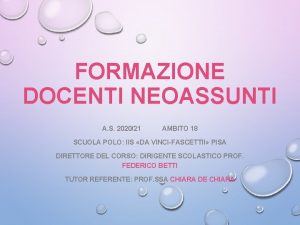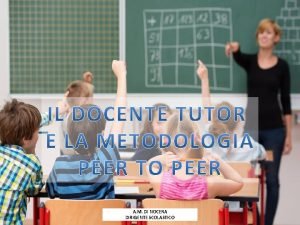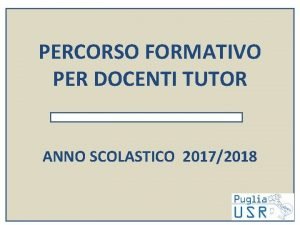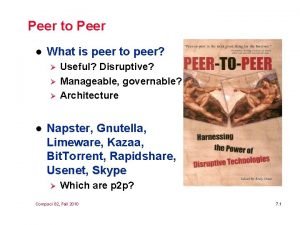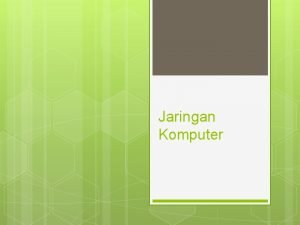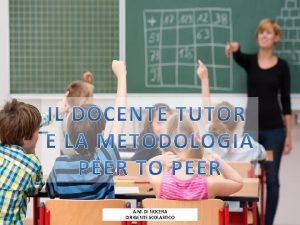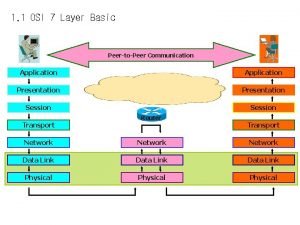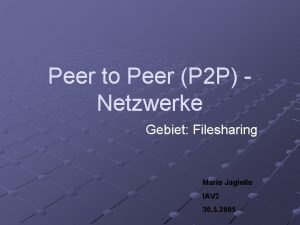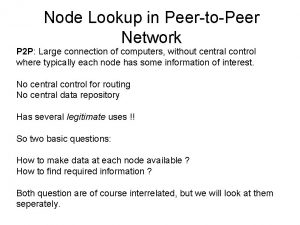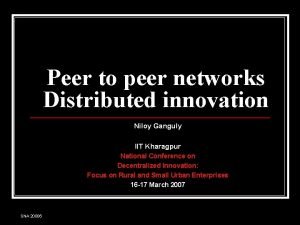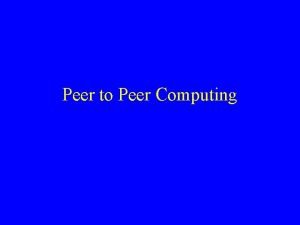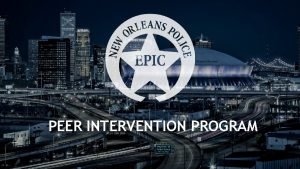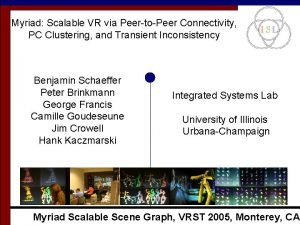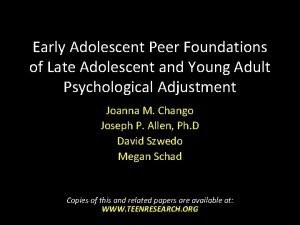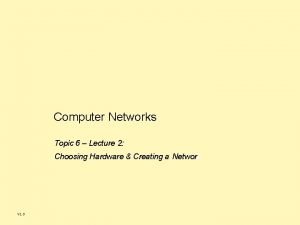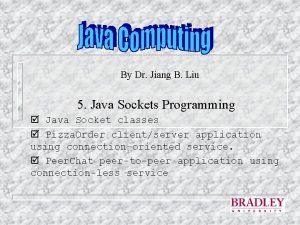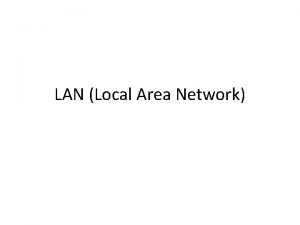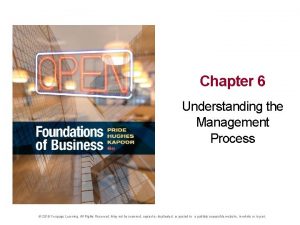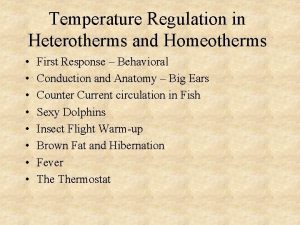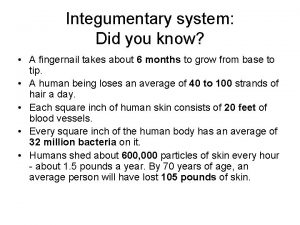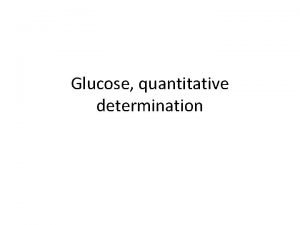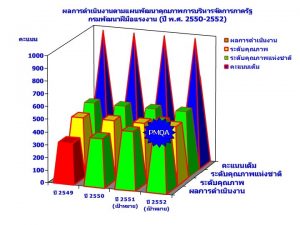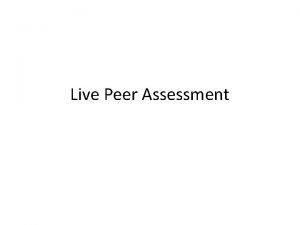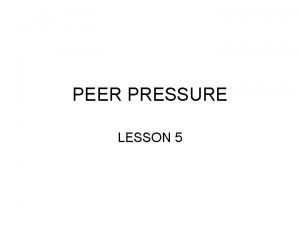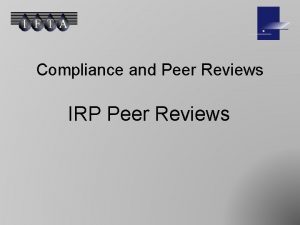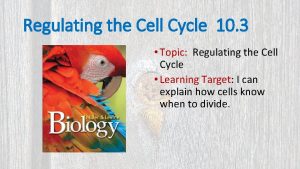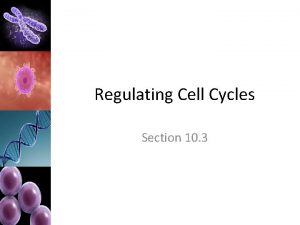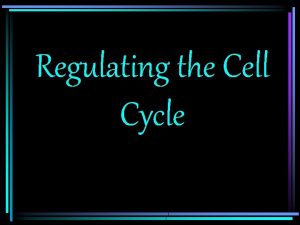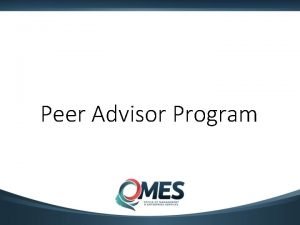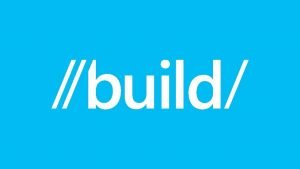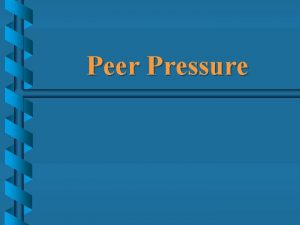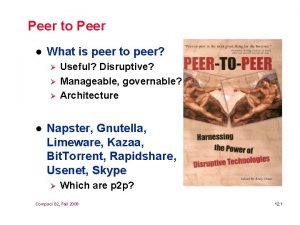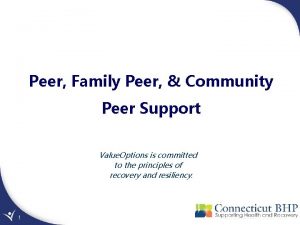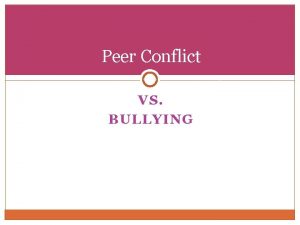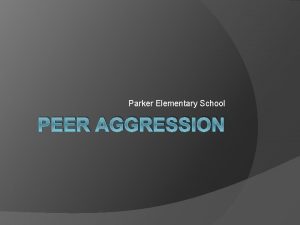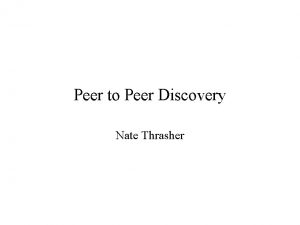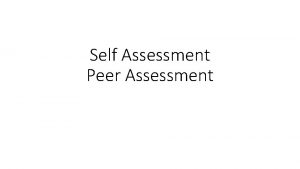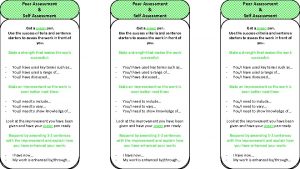Self Regulating Learners Self and peer assessment Karen





























- Slides: 29

Self Regulating Learners Self and peer assessment. Karen Lethbridge


• How important is it for students to be reflective about their learning and take ownership of it? • Do you believe self assessment should be taught ? • How high a priority do you place on self assessment in your teaching practice? • What are some barriers you perceive to implementing self assessment with your students?

New Zealand Curriculum Activity 1 Using your NZC list key words from the Vision, Principles and Values and Key Competencies connect for you with self and peer assessment. Take pg 39/40 and add key words that support the notion of self and peer assessment.

Now take those key words and think about what is happening for you in your classroom. Share ideas. Where in your planning do you note strategies /techniques that build and encourage self and peer assessment ? Do you allow time ? What does your school documentation say about self and peer assessment?

A statement All our young people should be educated in ways that develop their capability to assess their own learning. Students who have developed their assessment capabilities are able and motivated to access, interpret, and use information from quality assessments in ways that affirm or further their learning. Directions for Assessment in New Zealand (2009) Absolum, Flockton, Hattie, Hipkins, Reid

How can you use this presentation ? • Clarify the purpose and value of self and peer assessment in your classroom and across your school. • Review and /or reflect on the self and peer assessment practices in your classroom and across your school. • Develop /refresh/refine the skills of self and peer assessment and identify strategies to do this.

Andrade H. and Valtcheva, A. (2008) Self-assessment is a process of formative assessment during which students reflect on the quality of their work, judge the degree to which it reflects explicitly stated goals or criteria, and revise accordingly. Self-assessment is done on drafts of works in progress in order to inform revision and improvement. ********

Formative Assessment Classroom Techniques FACTs • Purposefully designed and used to examine student thinking • Used to get students thinking about their thinking – being metacognitive • Makes students’ thinking ‘visible’ – to themselves, peers and teachers. • Allows the teacher to continuously gather information on student thinking and learning

10

How do we teach it? • Define it – what is it? • Discuss it – why do we use it ? What is good about self assessing your own work ? • Teach , model , scaffold , and role play skills of self assessment • Process- develop a process where students are able to use LI/SC to identify successes and the bits for improvement. • Plan and Provide opportunities during the lesson when you are introducing self assessment

Some strategies Self and peer assessment skills need to be taught, modelled and scaffolded: A suggested starting place- 1. Students assess against criteria and identify successes. 2. Students identify success and where criteria have not been met. Teacher may suggest ways to improve. 3. Students identify success and a place for improvement, and make the improvement independently.

Tipping the scales in the right direction for student growth. What can we do as teachers ? • Share learning goals with students so that they can monitor their own progress towards them. • Encourage the belief that ability is incremental rather than fixed. • Make it more difficult for students to compare themselves with others in terms of achievement. • Make sure feedback/feedforward will help future progress. • Provide opportunities to transfer control of the learning from the teacher to the students. Use techniques that other teachers have used successfully and build on them.

How to organise Peer Assessment Topping (2008) Planning is essential to ensure successful peer assessment • • Collaborate with peers when developing the initiative Consult the students – seek their advice and approval of the scheme Discuss the process with students; clarify the purpose, rationale and expectations Involve the participants in developing assessment criteria Consider carefully peer assessment partners or groups. These will change according to circumstances. Provide training, examples and practice – show them how to do it. Give feedback and coaching Examine the quality

What if students don’t meet the criteria ? Students need to be given strategies when they haven’t met criteria. Some examples are: • Retrace your steps in the process. • Check with a buddy. • Look at the exemplar again. • Read it out loud. • Find more information. • Use a dictionary.

Some techniques for promoting self and peer assessment. • Highlighting/circling/colour coding • ‘Two stars and a wish’ • So far? • Self assessment on a continuum • Thumbs up/thumbs down • Traffic lights/smiley faces • Learning Logs

Use traffic lights as a visual means of showing understanding. e. g. • Students have red, amber and green cards which they show on their desks or in the air. (red = stop, I’m not getting this amber-I need to clarify some aspects , green = totally get it etc. ) • Students self-assess using traffic lights. The teacher could then record these visually in their mark book.

• Another variation on the version: Each students has 3 cups. Lesson begins with green cup showing. If a student wants the teacher to slow down the yellow cup is shown , if a student wants to ask a question the red cup is shown. In this room the rule is if red is shown the teacher draws out a named iceblock stick randomly and that student answers the question. If a student is showing yellow or green he/she can be called on to explain the work to someone else. Flow of information about the pace of the lesson helps the teacher adjust to meeting the needs of the learners.

Dylan Wiliam


More formal strategies • End of lesson check sheets • End of unit written assessments • Learning diaries • ‘I can do’ sheets


Learning Logs/Journals • Students keep an ongoing record of responses: They could be invited to respond to no more than three of the following. Today I learned…. . I was surprised…. . The most useful thing I will take from this lesson…. . One thing I’m not sure about……… The main thing I want to find out more about is…. I’m still wondering……. .

Sample self-assessment After students complete a mathematical problem or investigation, ask them to evaluate how they felt about their work by writing "yes, " "no, " or "not sure, " in response to all of the following questions. Be sure to explain that there are no correct or incorrect responses. • I understood the directions to the problem. _____ • I found an answer to the problem. _____ • I could explain this problem to another student. _____ • I enjoyed solving this problem. _____ • I thought the problem was too hard. _____ • I thought this problem was too easy. _____ • I thought this problem was just right. _____ • I never saw this kind of problem before. _____ • This problem reminds me of other problems I have solved. _____ • I would like to do more problems like this one. _____

• Sharing our writing.

Remember self and peer assessment engages children with the quality of their work. It helps them reflect on how to improve it. What has been done well and why is it well done ? Then : What can be improved and how can it be improved?

Shared techniques • What has worked for you?

Reflection • Where to for my practice from here? • What will I do as a result of this workshop?

References and readings Absolum, M. (2006). Clarity in the classroom. Auckland: Hodder Education. pp 98 -117. Andrade H. and Valtcheva, A. (2009). Promoting Learning and Achievement through Self Assessment, Theory into Practice, Vol 48 pp 1219. Topping, K. J. (2009), Peer Assessment, Theory into Practice, Vol 48 pp 20 -27. Wiliam, D. When is assessment learning-oriented? 4 th Biennial EARLI/Northumbria Assessment Conference, Potsdam, Germany, August 2008. www. dylanwiliam. net Wiliam, Dylan (2010, Embedded formative assessment. Solution Tree Press USA pp 151 -157
 Dailyteachingtools
Dailyteachingtools Features of peer to peer network and client server network
Features of peer to peer network and client server network Skype pros and cons
Skype pros and cons Annotazioni sulla verifica effettuata peer to peer
Annotazioni sulla verifica effettuata peer to peer Peer-to-peer
Peer-to-peer Peer to peer transactional replication
Peer to peer transactional replication Peer to peer transactional replication
Peer to peer transactional replication Konsep dasar jaringan komputer
Konsep dasar jaringan komputer Esempi di peer to peer compilati
Esempi di peer to peer compilati Esempi di peer to peer compilati scuola primaria
Esempi di peer to peer compilati scuola primaria Relazione finale docente tutor compilata
Relazione finale docente tutor compilata Peer to peer l
Peer to peer l Peer to peer merupakan jenis jaringan… *
Peer to peer merupakan jenis jaringan… * Bitcoin: a peer-to-peer electronic cash system
Bitcoin: a peer-to-peer electronic cash system Programmazione e sviluppo condiviso compilato
Programmazione e sviluppo condiviso compilato Peer-to-peer communication in osi model
Peer-to-peer communication in osi model Peer p
Peer p Node lookup in peer to peer network
Node lookup in peer to peer network Peer-to-peer o que é
Peer-to-peer o que é Peer to peer computing environment
Peer to peer computing environment Peer intervention program
Peer intervention program Peer-to-peer o que é
Peer-to-peer o que é Peer-to-peer o que é
Peer-to-peer o que é Peer to peer network hardware
Peer to peer network hardware Peer to peer chat application in java
Peer to peer chat application in java Jaringan peer to peer diistilahkan dengan
Jaringan peer to peer diistilahkan dengan Chapter 6 understanding the management process
Chapter 6 understanding the management process Piloerection
Piloerection Regulating body temperature
Regulating body temperature Ogtt curve
Ogtt curve


